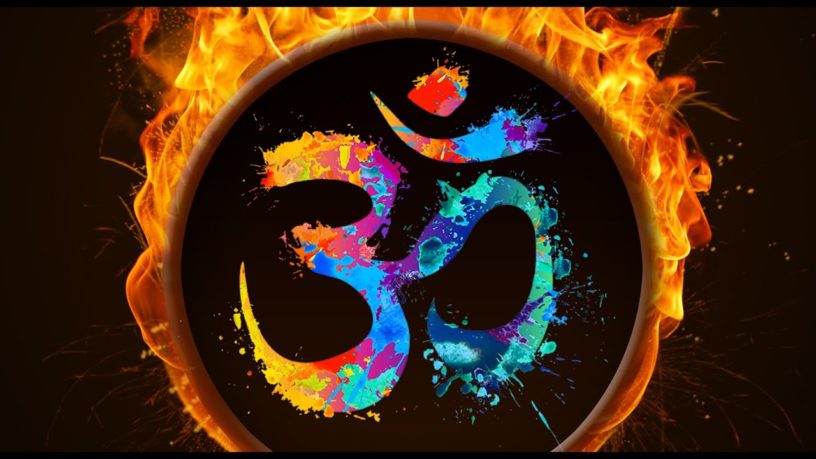What is the scriptural reference for the power of Om? The Upanishads are part of our core scriptures, the Vedas. Together with the Bhagavad Gita, and the Brahma Sutras, they contain the core philosophy of Sanaatan Dharma. The power of Om is referenced in the Mandukya Upanishad, which has only 12 verses. Adi Shankara said that if you don’t read all the 108 Upanishads, then read the Mandukya Upanishad (here translated into English by Eknath Easwaran).
First, Om stands for the Supreme Reality. It is a symbol for what was, what is and what shall be. Om represents past, present and future and also what lies beyond.
Second, Brahman is all and Self is Brahman. This Self has four states of consciousness. (What does consciousness mean? It is the basis, the ground of being, all that exists, but we refer to it in Sanaatan Dharma as Brahman. Other religions refer to It by different names but the essence remains the same.)
The first state of consciousness is called Vaishvanara (the waking state), in which one lives with all the senses turned outward, aware only of the external world. (While we are awake, we are driven by thoughts and repeat our actions every day, pulled by worldly endeavours.
Next, Taijasa, is the name of the dreaming state in which, with the senses turned inward, one enacts the impressions of past deeds and present desires. (Most people sleep at the end of the day, usually for eight hours, or one-third of the day. By extension, we sleep for one-third of our life with no consciousness of the external world. We dream, which is caused by unfulfilled desires that go deep into the subconscious and emerge in dreams.)
The third state is called Prajna or deep sleep, in which one neither dreams nor desires. In Prajna, there is no mind. There is no separateness but the sleeper is not conscious of it. Let us become conscious and it will open the door to abiding joy. (How many of us can recall having slept but dreaming nothing. We might remember that we dreamt nothing and had a deep, blissful sleep. We all experience this state but most do not recall it on waking up.) In that state of Prajna, the all-powerful and all-knowing dwells in the heart of all as a ruler. Prajna is the source and end of all. (That state is one of pure bliss because there is no desire or objectivity. We are not seeing anything playing in the screen of our mind. Only the Self exists, and we refer to this as the blissful state.)
The fourth is the superconscious state called Turiya, which is neither inward nor outward, beyond the senses and the intellect, in which there is none other than the Lord. He is the Supreme goal of life. He is the infinite peace and love. Realise Him. (Beyond the deep sleep without dreaming state, which is not a separate state, Turiya is in all three states, waking, dreaming and deep sleep. )
Turiya is represented by Om. Though indivisible, it has three sounds: a, u, m. A stands for Vaishvanara. U stands for Taijasa and m corresponds to Prajna. Om represents the three states of consciousness, but the mantra, Om, stands for the supreme state of Turiya, beyond birth and death, symbol of everlasting joy. At the end of the Om, there is silence. Turiya pervades the entre sound of Om. Those who know Om as the Self, becomes the Self. Truly, they become the Self. Om Shanti Shanti Shanti.
In summary, Om represents these four states of consciousness and when we chant it, we concentrate on the sounds, but also on the silence at the end of the sound and between the sounds. That is the Supreme State that is in all existence.
From a Sunday morning service with Pt. Dr. Umesh Persad, Spiritual Leader, Gyaan Deepak Kirtan Mandali.



